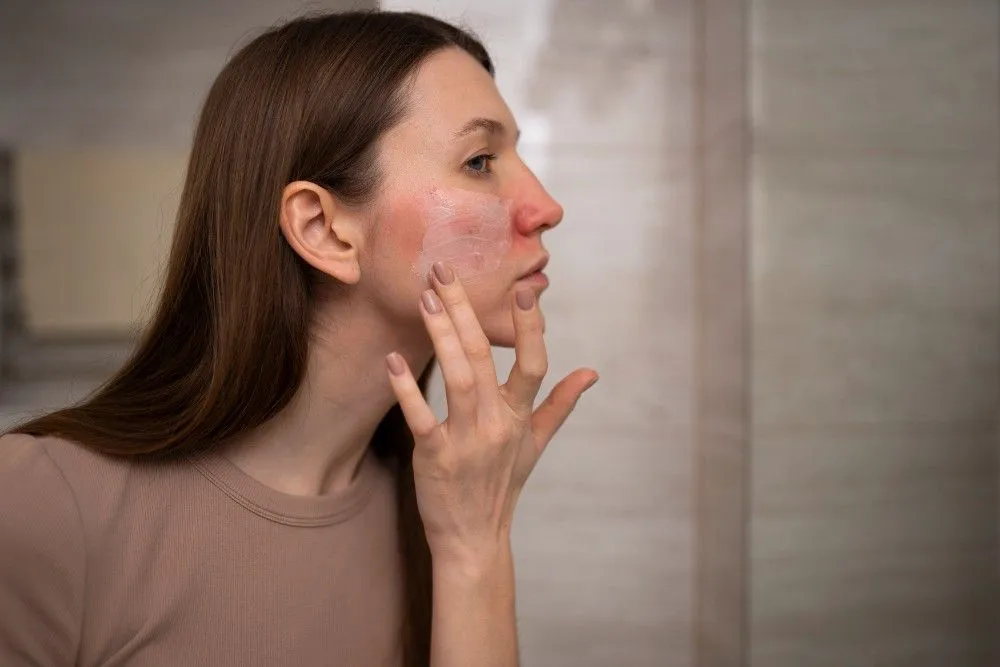An athlete's foot is a contagious fungal infection also commonly known as "Tinea Pedis" which affects the upper part of the skin on the foot. At times this can spread to the toenails and the hands. Since this infection is very common in athletes, it is called an athlete's foot. At times, it starts with flaking of the skin layer for some people, while others may face itching, redness, burning, or stinging sensation. An athlete's foot is caused by a fungus called Trichophyton. We will discuss the Athlete's foot symptoms, causes, and treatment below.
This infection happens under the condition when the skin is moist and warm such as the foot inside the shoes. However, only 0.75 percent of people who walk a barefoot on regular basis are affected. Although it is a common infection and can be treated with OTC medication, however, it is always advisable to consult a doctor at the initial stage. It is important to know the causes of the Athlete's foot, the risk associated, and the best way to treat such infection at the right time.
Who are at risk?
Well, any one of us can be affected by an athlete's foot, however, there are certain behaviors that can trigger or increase risk. Some of the common factors that may trigger such risk are:
- People having small skin rashes or nail injuries on their foot
- If you are barefoot and visit public places, toilets, showers, swimming pools, bed sheets, clothing, and especially locker rooms
- In case someone shares shoes, shocks, towels
- Work or activity which causes sweaty feet
- People who keep their feet wet for a longer time
These are just some of the common risks associated with this form of skin infection. Since this is contagious, there are many complications associated with it. Even, little ignorance may spread the infection to other body parts. Avoid scratching feet with your hands as hands can get affected most easily. Toenails are also infected in most cases along with the groin, as in most cases fungal infection easily travels through towels and hands.
Also Read: Best Nail Polish For Toenail Fungus in 2024
Athlete's foot is caused by?
Let us quickly look at what exactly causes an athlete's foot. Athlete's foot is caused by and associated with a certain fungus called Trichophyton, a kind of dermatophyte that often causes fungal infections in hair, nail, and skin.
When human skin is clean and dry such fungal infections can't reproduce to a large extent. However, they multiply rapidly and spread all over the skin if they get to thrive in conditions like warm, and damp.
Athletes wearing tight and heavy shoes are more prone to such skin infections as they offer favorable conditions for the fungal infection to spread. According to experts, shoes made of canvas or leather are better, compared to plastic shoes which cause moist and warm feet. The chances are even higher if someone wears damp shocks for a longer time.
Anyone can catch such fungus infection, it can be through direct contact, through an infected person, or even by touching things contaminated with this form of fungus. Always remember, the skin infection athlete's foot is caused by several factors which help the fungal infection to grow and it can be spread through both indirect and direct contact. It has been observed that someone with a weak immune system is generally more prone to get affected by an athlete's foot.
Athlete's Foot Symptoms
In most cases, the upper layer of the skin on the foot between the toes can look reddish, become itchy or one may feel a stinging or burning sensation. Athletes' foot symptoms are often related to certain conditions when your foot becomes dry, red, scaly, cracking, or flaky. In most cases, your skin can start cracking, and there can be oozing itchiness, or swelling. Scaling patterns becomes prominent in the sole and the side of the foot.
Immediate medication or consultation is very much required as little negligence can risk the infection spreading from one toe to other and even on hands and nails. Beware, in some rare cases this contagious disease can spread on hands, this is called Tinea manum. Touching the affected area and not washing hands increases the chance of this rare complicated infection. Washing hands with medicated soap and warm water are highly recommended.
Best way to treat athlete's foot
Over-the-counter (OTC) topical antifungal medications are one of the most used and proven ways to treat Athlete's feet. In case OTC medications are not able to tackle the fungal infection, you may consult your doctor to get topical or other oral prescription-strength antifungal treatment. At times, your doctor can directly recommend home treatments to eliminate the infection based on the athlete's foot symptoms.
There are several OTC topical antifungal medications available:
- Miconazole (Desenex)
- Tolnaftate (Tinactin)
- Clotrimazole (Lotrimin AF)
- Terbinafine (Lamisil AT)
- Butenafine (Lotrimin Ultra)
Prescription medications that your doctor may include are Oral antifungal medicineslike:
- Itraconazole (Sporanox)
- Fluconazole (Diflucan)
- Terbinafine (Lamisil)
- Clotrimazole or miconazole
- Topical steroid medications to eliminate painful swelling or even oral antibiotics in some cases.
Home medication can be recommended such as soaking your feet in diluted vinegar or salt water. This generally helps to dry up blisters in a quick time. There are alternative therapy also available; consult a doctor and know if tea tree oil solution can help or not.
An athlete's foot infection can generally be identified by some of its hallmark signs and symptoms. However, a doctor will always look to exclude other probable conditions, such as psoriasis, dermatitis, or low-grade skin infections. Mostly, a simple test which is skin lesion potassium hydroxide is given to find the root cause.
Also, read about: Foods that lower Cholesterol & Air Purifying Plants in India.
Summary: Eliminate the long-term risk
We have discussed Athlete's foot meaning i.e. it is caused along with athlete's foot symptoms and medication; early diagnosis can certainly heel such infection in a shorter time. Athletes' foot fungal infections can be severe or mild. At times this infection can clear up fast, however, at times they tend to last longer. Antifungal treatment is wisely recommended for Athlete's foot infections as they respond quickly. At times, fungal infections stick and are too difficult to eliminate, in such cases, long-term treatment with best-suited antifungal medications under medical guidance becomes necessary to keep athlete's foot infections away.
[author title=" Dr. Sunil Rajan" image="https://cdn.credihealth.com/system/images/assets/21989/original/sunil-rajan-orthopedist.jpg?1516616132"]Dr. Sunil Rajan is an Orthopedist at Apollo Hospitals, Vijay Nagar, Indore. He has an experience of 21 years in this field. Dr. Rajan completed his MBBS from MGM Indore and MS - In orthopedics from JMC Bhopal in 1996. Some of the services provided by him are Neck and Spine Biopsy, Spine Mobilization, Ligament, and Tendon Repair Knee Arthroplasty, etc For your all health-related issues call +91 8010-994-994 and talk to Credihealth Medical Experts for FREE. Get assistance in choosing the right specialist doctor and clinic, compare treatment costs from various centers, and timely medical updates

Reviewed by







